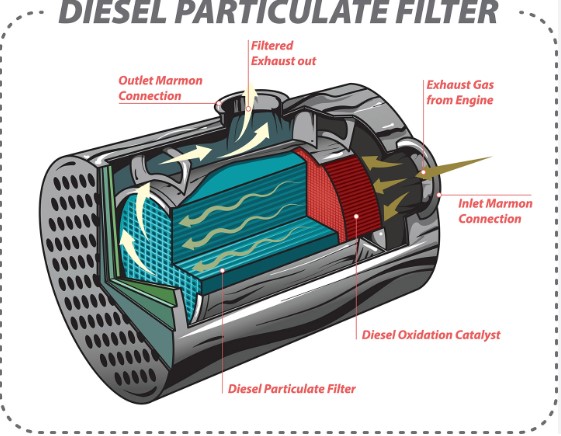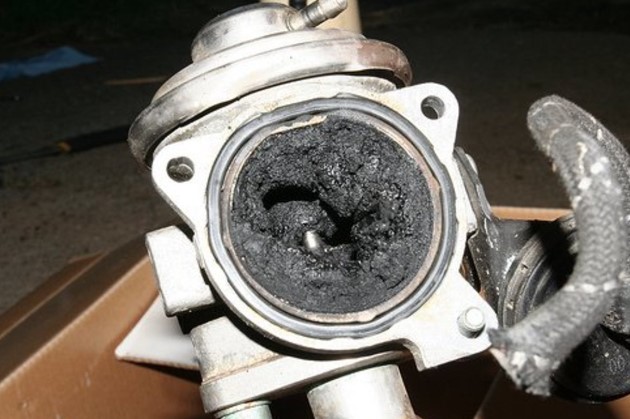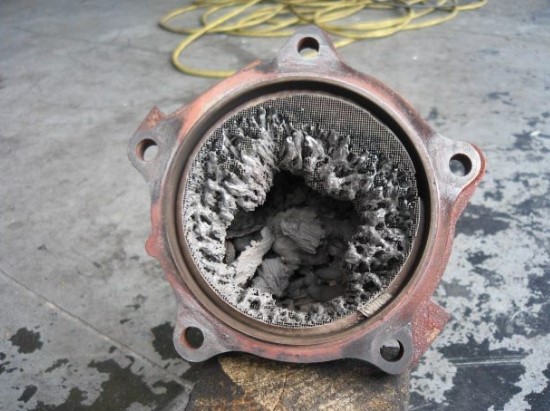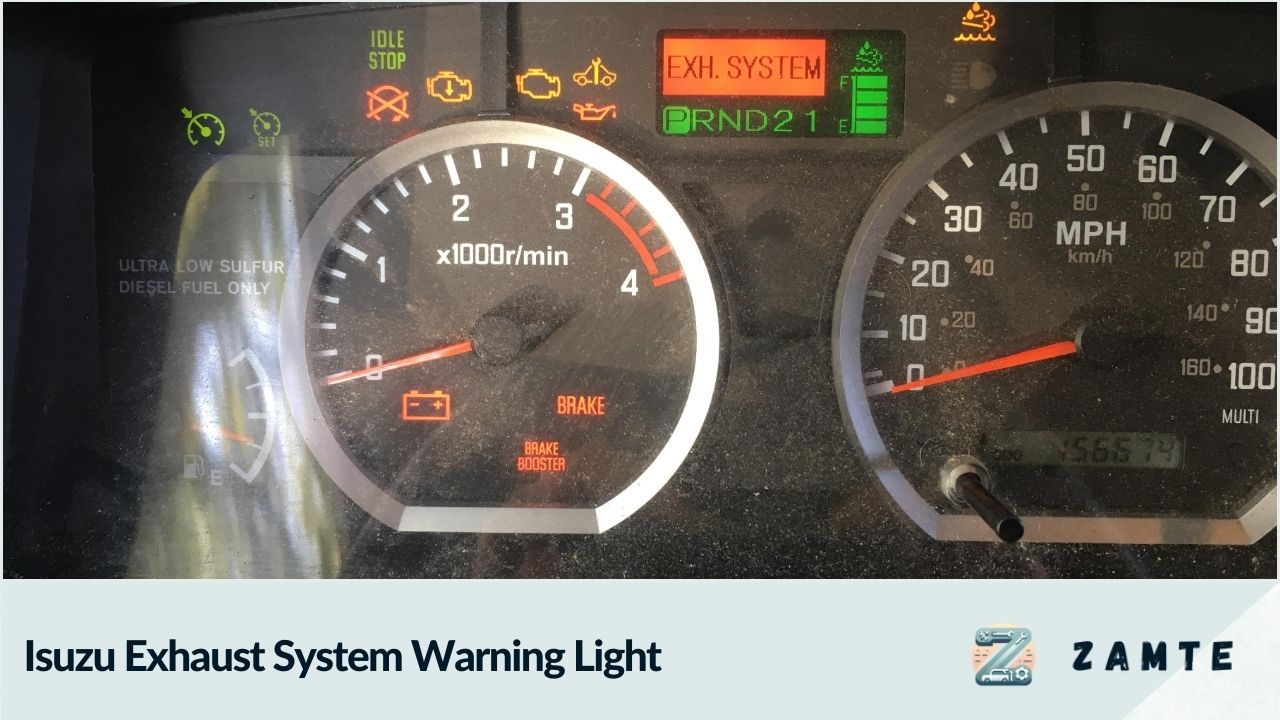When the exhaust system warning light illuminates on your Isuzu truck's dashboard, it can be concerning and confusing. This important indicator alerts drivers to potential issues with the exhaust and emissions systems that require prompt attention. Understanding what triggers this warning light and how to properly diagnose and resolve the underlying problems is crucial for maintaining your Isuzu's performance, efficiency, and compliance with emissions regulations.
| Warning Light | Meaning | Required Action |
|---|---|---|
| Solid Light | Minor issue detected, regeneration may be needed | Continue driving, monitor for changes |
| Flashing Light | More urgent problem, parked regeneration required | Perform parked regen as soon as possible |
| Solid Light + Check Engine Light | Serious fault detected | Immediate service required |
| Stop Engine Light | Critical issue, risk of damage | Shut down engine and call for assistance |
Common Causes of the Exhaust System Warning Light
The exhaust system warning light can be triggered by several different components and issues:
Diesel Particulate Filter (DPF) Problems

The DPF is designed to trap and burn off soot particles from the exhaust. When it becomes clogged or unable to properly regenerate, the warning light will activate[1]. This is one of the most common causes in Isuzu trucks. Signs of DPF issues include:
- Decreased fuel efficiency
- Loss of engine power
- Excessive exhaust smoke
- Difficulty starting the engine
Faulty Exhaust Gas Recirculation (EGR) System

The EGR system recirculates a portion of exhaust gases back into the engine to reduce emissions. Problems with the EGR valve, cooler, or associated sensors can trigger the warning light[2]. Symptoms may include:
- Rough idling
- Decreased acceleration
- Increased fuel consumption
- Engine misfires
Oxygen Sensor Malfunction

Oxygen sensors monitor the exhaust stream and help the engine control module adjust the air-fuel mixture. When they fail or provide inaccurate readings, it can cause the warning light to come on[3]. You may notice:
- Poor fuel economy
- Rough engine performance
- Failed emissions tests
Catalytic Converter Issues

A failing catalytic converter cannot properly process harmful exhaust emissions. This will often trigger the exhaust system light along with decreased performance[4]. Watch for:
- Reduced acceleration
- Engine misfires
- Sulfur or rotten egg smell from exhaust
Exhaust Leaks

Cracks, holes, or loose connections in the exhaust system allow untreated emissions to escape. This can activate the warning light and cause noticeable symptoms[5]:
- Loud exhaust noise
- Decreased fuel efficiency
- Exhaust fumes in the cabin
How to Diagnose and Resolve Exhaust System Warning Lights
When your Isuzu's exhaust system light comes on, follow these steps to properly diagnose and address the issue:
- Check for other warning lights: Note if the check engine light or any other indicators are also illuminated, as this provides important diagnostic information[6].
- Scan for diagnostic trouble codes (DTCs): Use an OBD-II scanner to retrieve any stored fault codes from the engine control module. This will help pinpoint the specific problem area[7].
- Inspect the exhaust system: Visually check for any obvious damage, leaks, or loose components in the exhaust system and DPF.
- Perform a manual regeneration: If DPF-related codes are present, try initiating a manual regeneration cycle following your truck's specific procedure[8].
- Check fluid levels: Ensure engine oil, coolant, and DEF (if equipped) are at proper levels, as low fluids can impact exhaust system performance.
- Evaluate recent maintenance: Consider if the issue could be related to recent work performed or overdue maintenance items.
- Consult a professional: If you're unable to resolve the problem or lack the proper diagnostic tools, have the truck inspected by an authorized Isuzu service center.
Preventing Future Exhaust System Issues
To minimize the chances of experiencing exhaust system problems and warning lights in your Isuzu:
- Follow the recommended maintenance schedule, including regular oil changes and air filter replacements[9].
- Use high-quality diesel fuel and maintain proper fuel levels.
- Allow for periodic highway driving to facilitate passive DPF regeneration.
- Address any performance issues or warning lights promptly to prevent more serious problems.
- Consider using fuel additives designed to keep the fuel system and DPF clean (consult your owner's manual first).
When to Seek Professional Help
While some exhaust system issues can be resolved through basic troubleshooting, certain situations require immediate professional attention:
- The Stop Engine light is illuminated along with the exhaust system warning
- Multiple warning lights are active simultaneously
- You're unable to complete a manual regeneration cycle
- There's a noticeable loss of power or excessive smoke
- You smell exhaust fumes inside the cabin
In these cases, it's best to have your Isuzu truck inspected by a qualified technician to prevent potential damage and ensure safe operation.
FAQs
- How often should I expect to see the exhaust system warning light?
With proper maintenance, the light should rarely illuminate. Frequent occurrences indicate an underlying issue needing attention. - Can I continue driving when the exhaust warning light is on?
If the light is solid, you can typically continue driving but should monitor for changes. A flashing light requires more immediate action. - How much does it cost to repair exhaust system issues in an Isuzu truck?
Costs vary widely depending on the specific problem. Minor sensor replacements may cost a few hundred dollars, while major component repairs can exceed $1000. - Will exhaust system problems affect my truck's fuel economy?
Yes, many exhaust-related issues can significantly impact fuel efficiency, sometimes reducing MPG by 10-20%. - Can extreme weather conditions trigger the exhaust system warning light?
In some cases, very cold temperatures can temporarily affect sensor readings or DPF regeneration, potentially causing the light to come on.
👉 Check this out: Jeep Start Stop System Warning Light
Citations:
- 1. https://grimmermotors.co.nz/exhaust-light-diagnostics-repair-hamilton/
- 2. https://www.nkrdieselparts.com/blog/exhaust-system-warning-light-isuzu
- 3. https://unsealed4x4.com.au/d-max-mu-x-common-problems-solutions/
- 4. https://www.ironbuffalohd.com/articles/the-top-signs-your-exhaust-and-aftertreatment-system-needs-repair
- 5. https://magazine.unsealed4x4.com.au/unsealed-4x4-issue-068/mu-x-common-problems-and-solutions
- 6. https://www.youtube.com/watch?v=jbjR0oNcbts
- 7. https://www.traceyroad.com/dpf-lights-what-to-look-for-when-they-come-on/
- 8. https://www.justanswer.com/medium-and-heavy-truck/gd5pp-2016-npr-5-2-l-red-exhaust-light-on-def-light-on-engine.html
- 9. https://www.performexauto.com.au/blog/top-5-common-exhaust-system-problems-and-solutions/
